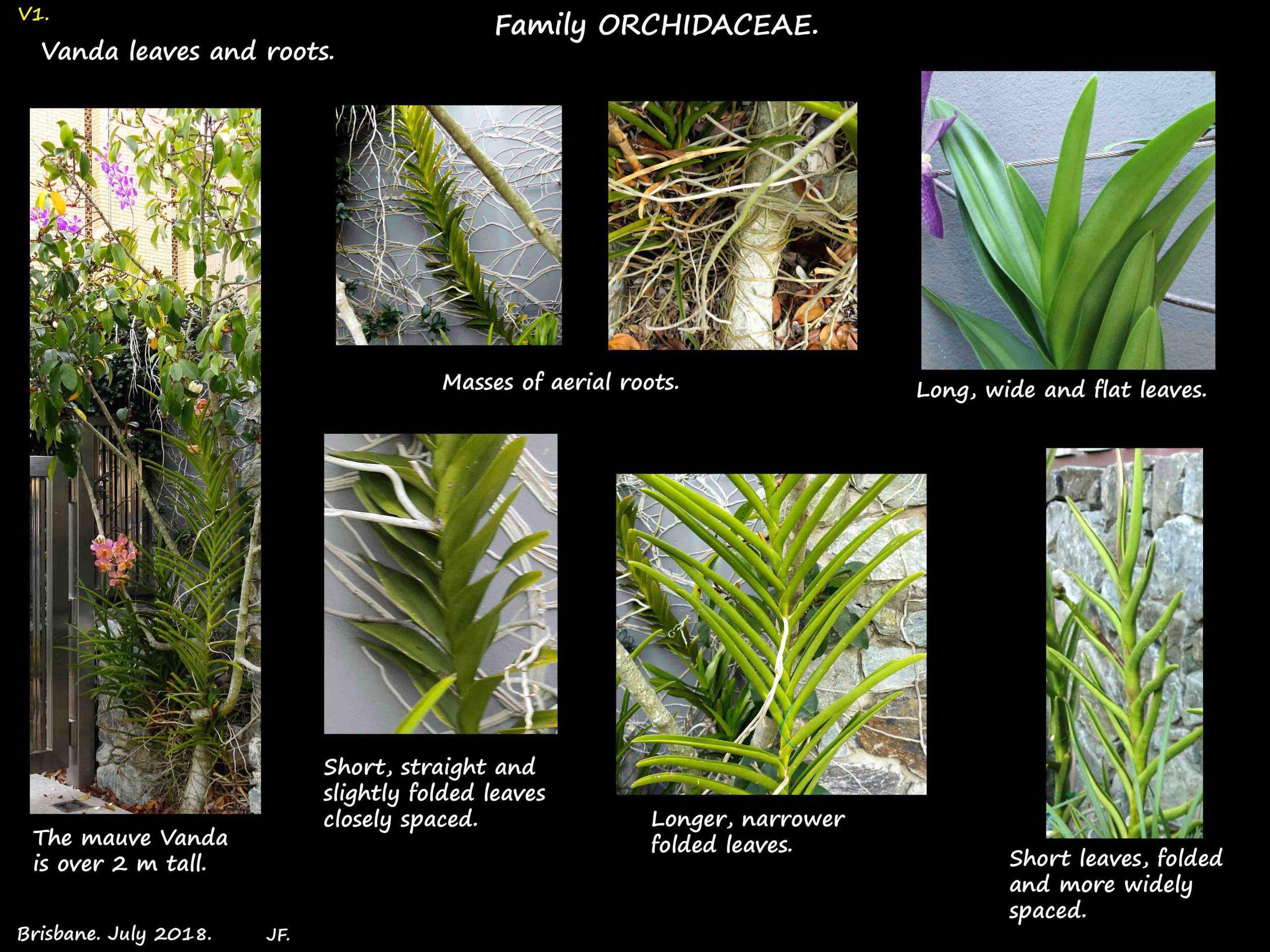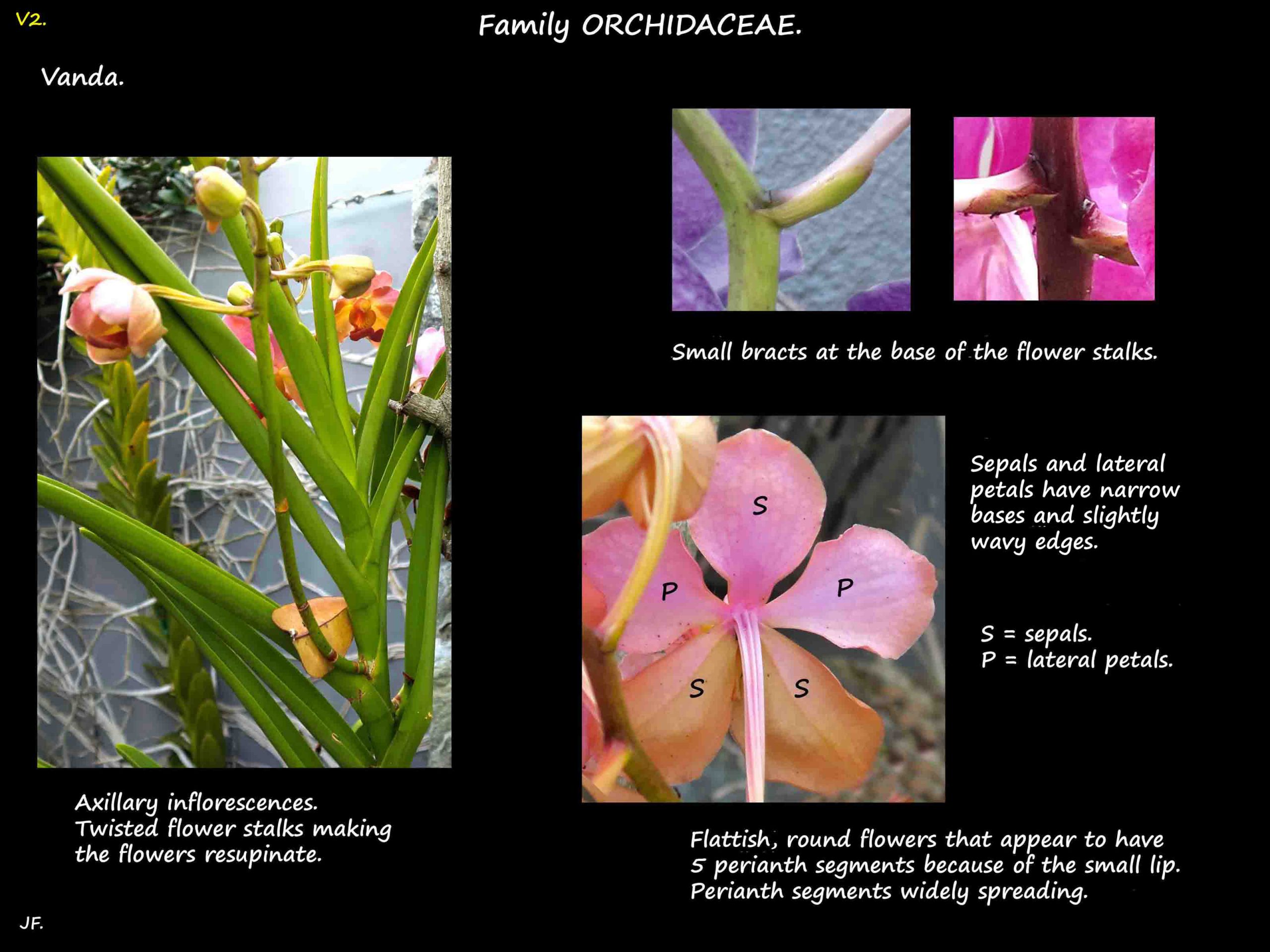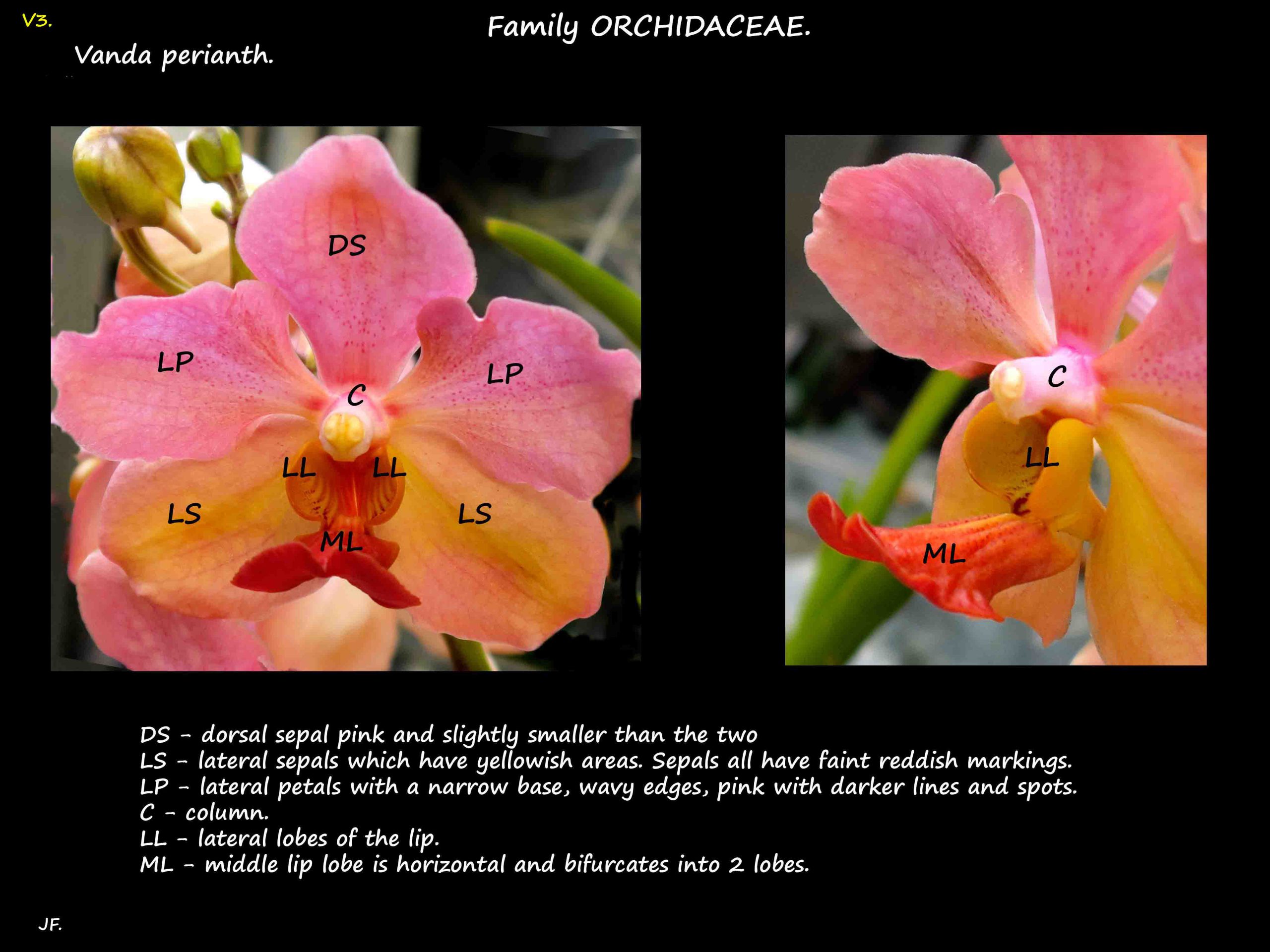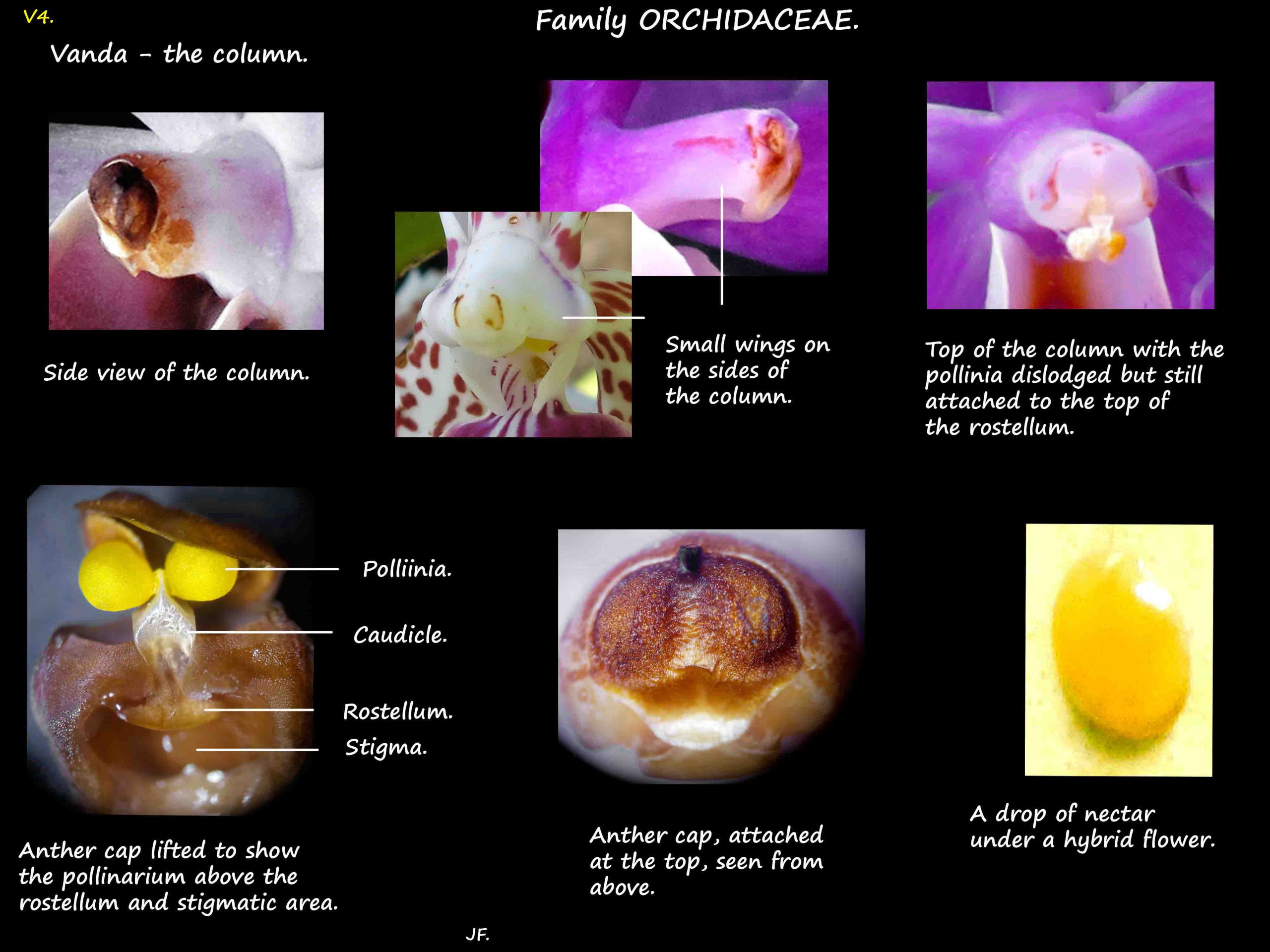Vanda Orchids.
The Vanda genus now has up to 80 or so species as other genera have been transferred into it.
Those moved are genetically closely related to Vanda.
The cylindrical leaved Vandas were transferred to Papilionanthe but are often still known as Vanda.
Many species have also been known as varieties.
There are thousands of hybrids particularly involving V. coerulea and V. sanderiana but also between
other Vanda sp. and related genera such as Ascocentrun.
Vanda sp.
Evergreen, mostly epiphytic with some lithophytic or terrestrial.
No pseudobulbs and from miniatures up to metres tall.
Stems are unbranched or sparsely branched from the base.
They have very large aerial root systems.
Leaves are very variable depending on where they are growing.
They are leathery and arranged in 2 ranks with bases sheathing the stem.
Leaves can be well spaced, crowded with overlapping bases or arise from the base.
They can be curved and strap-like; and flat or folded longitudinally.
Some have semi-cylindrical leaves.
The tips may be irregular as if chewed.
Axillary inflorescences have up to about 15 flowers.
Each flower has small bracts partly sheathing the bases of their stalks.
Resupinate flowers are flat, circular and from about 3 cm up to 10 cm across.
Perianth segments are thickish, all free and spread outwards.
They have narrow bases and the margins may be wavy.
The dorsal sepal may be similar to, or different from, the lateral ones.
The lateral petals are free and narrower than the sepals.
The medial petal, with the base of the column, forms a spur.
The spur is short, conical and with a blunt tip.
The 3-lobed lip is stiff and has large or small lateral lobes.
The medial lobe is large, projects forwards, and is split into 2 lobes which often curve downwards.
The lip has low, fleshy ridges or calli.
They come in a large range of colours – cream, yellow, brown, orange, burgundy, purple, red and pink.
V. coerulea is a bluish-purple – a colour rare among orchids. It is often called blue.
Many have markings such as spots, mottled areas or tessellated (checkered) patterns.
When hybridised with Ascocentrum, flowers can be white, green or almost any colour.
Vandas do not produce nectar in the spur but Ascocentrum and its hybrids do.
The column is short, thick and straight with short wings.
The concave stigmatic area has a large or small rostellum above it with a large viscidium.
The anther is terminal with 2 hard, yellow pollinia.
Dehiscent capsules release many pale winged seeds.
Vanda & Ascocenda orchids.
In Family Orchidaceae the Vanda Alliance consists of Vanda and its closely related genera.
The subtribe Aeridinae, with over 100 genera, contains many of the better known orchids in the Vandeae tribe.
These are all monopodial orchids without pseudobulbs, having a small spur, an entire rostellum and 2 (4) pollinia.
Genera include the well known Phalaenopsis and Vanda orchids as well as many other genera including some that
have been used in the production of hybrids such as Aerides, Arachnis, Ascocentrum, Ascoglossum,
Gastrochilus, Luisia, Paraphalaenopsis, Sarcochilus, Trichoglottis, Vandopsis and others.
Ascocenda.
Tribe Vandeae > Subtribe Aeridinae > Alliance Hybrids > × Ascocenda.
The × Ascocenda group consists of hybrids between Ascocentrum species (compact plants and
flowers with many colours) and Vanda species (large flowers).
They are compact, evergreen epiphytes with thick aerial roots along the stem.
Leathery leaves are in 2 ranks along the thick stem.
Axillary inflorescences usually have up to 8 smaller, brightly coloured flowers.
The perianth segments can be spread out or can roll under slightly.
They occur in almost every colour (except a true blue) often with areas of contrasting colours or markings.
J.F.





